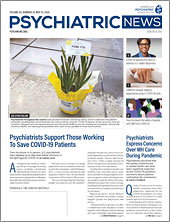DEA Ups Production Quotas for Controlled Substances in Response to COVID-19
In April the Drug Enforcement Agency (DEA) increased production quotas 15% for controlled substance medications that were in high demand because of the COVID-19 pandemic. These include medications such as codeine, ephedrine, fentanyl, hydromorphone, morphine, and pseudoephedrine.
In a statement, the agency also said it was increasing the authorized amounts of certain schedule III and IV controlled substances that may be imported into the United States, including diazepam, ketamine, lorazepam, midazolam, and phenobarbital, which are used to treat patients on ventilators. The agency added that it would increase the quota for methadone to ensure that opioid treatment programs have enough to treat patients with opioid use disorder.
DEA Removes Epidiolex from Schedule of Controlled Substances
The DEA has removed Epidiolex (cannabidiol) by GW Pharmaceuticals PLC from its list of substances subject to the Controlled Substances Act.
The agency had originally placed Epidiolex in Schedule V of the law in September 2018, three months after the medication was approved by the Food and Drug Administration. Epidiolex is approved for the treatment of seizures associated with Lennox-Gastaut syndrome or Dravet syndrome in patients aged 2 years or older.
As the medication is no longer a controlled medication, physicians may prescribe it without adhering to the requirements of state prescription drug monitoring programs, prescriptions will be valid for one year, and prescriptions can be transferred easily between pharmacies.
Epidiolex’s effectiveness was studied in three randomized, double-blind, placebo-controlled clinical trials involving 516 patients with either Lennox-Gastaut syndrome or Dravet syndrome. When taken along with other medications, it was shown to be effective in reducing the frequency of seizures compared with placebo.
SEP-363856 Shows Promise for Schizophrenia
In April Sunovion Pharmaceuticals Inc. announced that SEP-363856, an investigational medication for schizophrenia, improved positive and negative symptoms in patients in a four-week study. SEP-363856 is a novel trace amine–associated receptor 1 agonist with serotonin 1A agonist activity.
In the trial, which was published in the New England Journal of Medicine, 245 adults with schizophrenia were randomly assigned a daily dose of 50 mg to 75 mg of SEP-363856 or placebo. After four weeks, scores in the Positive and Negative Syndrome Scale dropped an average of 17.2 points in the treatment group compared with 9.7 points in the placebo group. The treatment group also experienced similar improvement in scores on the Clinical Global Impressions Severity scale and the Brief Negative Symptom Scale.
Side effects in the treatment group included drowsiness and gastrointestinal symptoms, and there was one sudden cardiac-related death.
“A Non–D2-Receptor-Binding Drug for the Treatment of Schizophrenia” is posted
here.
Combination Drug for Refractory Depression Gets Mixed Results
In March Axsome Therapeutics announced mixed results from a phase 3 trial of its investigational combination drug AXS-05 (45 mg dextromethorphan/105 mg bupropion) for treatment-resistant depression.
AXS-05 did not meet its primary endpoint of a statistically significant reduction from baseline in the total Montgomery-Åsberg Depression Rating Scale (MADRS) score at week 6 compared with bupropion alone. However, the drug did meet secondary endpoints by rapidly and statistically significantly improving symptoms of depression as indicated by changes in MADRS scores as early as the first week.
In the STRIDE-1 trial, 312 adults with treatment-resistant depression who had failed two or three prior treatments received either AXS-05 or 150 mg bupropion twice a day for six weeks. At the sixth week, patients who took AXS-05 had a mean MADRS score reduction of 11.6, compared with a mean reduction of 9.4 among those who took buproprion alone. However, this was not considered statistically significant.
For the secondary endpoints, patients who took AXS-05 had a mean MADRS score reduction of 5.2 at the first week, compared with a mean reduction of 3.6 among those in the buproprion-only group. At the second week, those who took AXS-05 had a mean MADRS score reduction of 8.0 versus 6.1 for those who took buproprion only. Overall, patients who took AXS-05 had a mean MADRS score reduction of 8.6 for the entire six-week trial, compared with a mean reduction of 6.7 in those who took buproprion alone. ■
